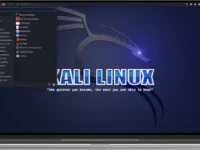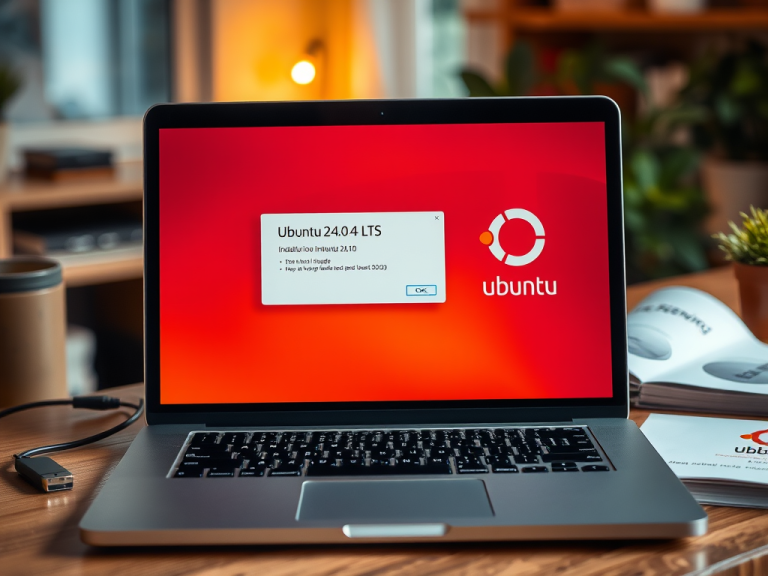How to Install Ubuntu
One of the most favored Linux distributions, Ubuntu boasts of having a very easy-to-use interface and efficient performance. Install either the older Ubuntu 24.04.2 LTS (Long-Term Support) version or the latest one, namely Ubuntu 24.10, either as a mature Linux enthusiast or a rookie — it does not matter because this is extremely simple to perform. This installation procedure will have step-by-step descriptions along with the terminal command required for doing this.
Table of contents
Minimum Requirements
- Processor: 2 GHz dual-core processor or better
- Memory (RAM): 4 GB
- Storage: 25 GB of free hard drive space
- Graphics: VGA capable of 1024×768 screen resolution
- USB Port: At least one USB port for the installation media
- Internet Connection: Optional but recommended for updates and third-party software
Recommended Requirements
- Processor: 2 GHz quad-core processor or better
- Memory (RAM): 8 GB or more
- Storage: 50 GB of free hard drive space
- Graphics: VGA capable of 1366×768 screen resolution or higher
- USB Port: At least one USB 3.0 port for faster installation
- Internet Connection: Required for downloading updates and additional software
Downloading Ubuntu
1. Download the ISO Image:
For Ubuntu 24.04.2 LTS, go to the official Ubuntu releases page.
For Ubuntu 24.10, go to the Ubuntu 24.10 releases page.
2. Create a Bootable USB Drive:
Download and install Rufus for Windows or use the dd command on Linux.
Using Rufus (Windows)
- Insert your USB flash drive.
- Open Rufus and choose the USB drive.
- Click on “Select” and select the downloaded Ubuntu ISO file.
- Click “Start” and wait for it to finish.
Using dd Command (Linux)
- Open a terminal.
- Find your USB drive with lsblk or fdisk -l.
- Use the dd command to make a bootable USB drive:
sudo dd if=/path/to/ubuntu-24.04.2-desktop-amd64.iso of=/dev/sdX bs=4M status=progress && syncSubstitute /path/to/ubuntu-24.04.2-desktop-amd64.iso with your downloaded ISO’s path and /dev/sdX with the identifier of your USB drive.
Installing Ubuntu
Boot from USB
- Put in the bootable USB drive in your computer.
- Restart your machine and access the BIOS/UEFI settings (usually by tapping F2, F12, Esc, or Del when it boots up).
- Make the USB drive the top boot device and save the setup.
- Your computer will boot from the USB drive, and you will see the Ubuntu welcome screen.
Installation Steps
Step1: Choose Your Language
Select your preferred language and click “Install Ubuntu”.
Step2: Keyboard Layout
Choose your keyboard layout and click “Continue”.
Step3: Updates and Other Software
- Select “Normal installation” for a full Ubuntu experience.
- Check the boxes for “Download updates while installing Ubuntu” and “Install third-party software for graphics and Wi-Fi hardware and additional media formats”.
- Click “Continue”.
Step4: Installation Type
- Select “Erase disk and install Ubuntu” if you would like to utilize the whole disk.
- For dual-boot, you can select “Install Ubuntu alongside Windows” or “Something else” for manual partitioning.
- Click “Install Now” and agree to your selection.
Step5: Time Zone
Choose your time zone and click “Continue”.
Step6: User Information
- Insert your name, computer name, username, and password.
- Select whether to login automatically or to prompt for a password.
- Press “Continue”.
Step7: Installation
- The installation procedure will start. This can take a while, so wait.
- You will be asked to reboot your computer when the installation is finished.
- Eject the USB drive and press “Enter”.
Post-Installation Steps
Update and Upgrade
Once installed, it’s important to update and upgrade your system to have the most recent security patches and software updates.
- Open a terminal.
- Update the list of packages:
sudo apt update- Upgrade installed packages:
sudo apt upgrade -yInstall More Software
You can install more software with the apt package manager. For instance, in order to install Git, use the command below:
sudo apt install git -yEnable Firewall
It is a good idea to turn on the firewall for extra protection.
sudo ufw enableInstall Drivers
If you have proprietary hardware, you might need to install extra drivers. Open the “Software & Updates” program, navigate to the “Additional Drivers” tab, and follow the prompts to install the required drivers.
Conclusion
Congratulations! You have now installed Ubuntu 24.04.2 LTS or Ubuntu 24.10 on your machine. Ubuntu provides a strong and highly customizable operating system that can meet every need for computing. Browse the wide range of software available in the Ubuntu Software Center and tailor your system according to your taste. Happy computing!
Read More: Allegations Against DeepSeek: Data Theft and IP Violation
Read More: DeepSeek AI: Revolutionizing the AI Landscape and Shaking the Global Stock Market




















0 Comments